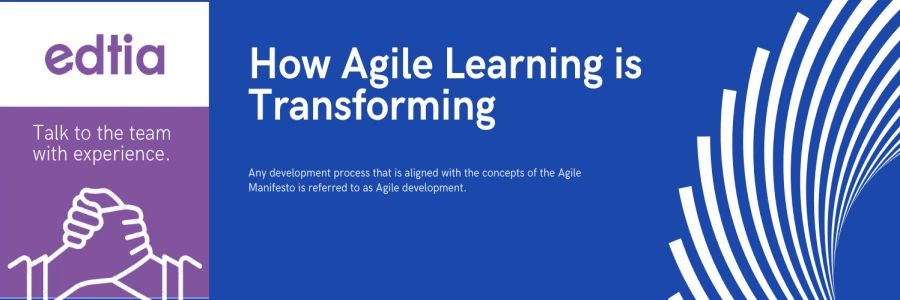What is Agile Transformation?
An Agile Transformation is an act of transforming an organization's form or nature gradually to one that can embrace and thrive in a flexible, collaborative, self-organizing, fast-changing environment. The Agile Manifesto values and principles can be taught and exercised throughout any organization as it does not just apply to development teams. The process for an Agile Transformation comes from understanding where your organization is at present and where you need to go. While any organization undergoing this transformation is likely to embrace agile, Scrum, Lean, etc., agile transformation is a much larger endeavor than just changing how software gets built.
What is the Agile transformation process?
- The agile transformation strategy starts by selecting a leadership team, establishing goals, and developing a roadmap. Building an Agile transformation project plan is not a one-time event. And it is a process and should be regularly inspected and adapted over time. The knowledge and experience of such an agile expert will help ensure that an organization does not repeat similar mistakes made by many organizations that have transitioned to agile.
- Creating an agile roadmap helps as a foundational framework when the time to scale a transformation is appropriate. As with any goal, whether it is made at the organizational level or the team level, there must be clarity as to the plan, why the goal has been chosen and what steps are needed to achieve that goal.
- Organizations use various techniques to create their roadmaps, and the same method can be applied when creating an agile transformation plan. Once the content of the roadmap items is identified, it will be essential to prioritize. Still, it's equally important to consider the agile transformation roadmap a "temporary" roadmap that can evolve. After an agile transformation roadmap has been established, elegant transformation project plans can develop to help describe and plan additional details and requirements for each roadmap item.
Challenges of an Agile transformation
- A company's core culture affects how it does business and treats its employees. Better engagement, more appreciation, transparent communication, empowering employees and teams, and open processes are hallmarks of an agile culture. The sudden shift in working culture can be a challenge to Agile transformation.
- Just having one or two teams that are agile is not going to assist you in your transformation. Agile methods have to be embraced by the entire organization to provide business agility. It will restrict the impact of the agile methodology if it's not taken beyond the test stage.
- A transformation across the organization is unthinkable without the support of the management. Agile leaders lead the change from the front, get in the required investments, help in creating a culture that encourages innovation and creates a medium for open transmission among all employees.
- An organization that speeds its transformation does so without proper planning, understanding of operations, or the support it requires to carry out this massive task. A successful transformation takes several years and concentrates on everything from culture change to strategy change to mindset change. A rushed action will reveal gaps in the transformation foundation and guide the activity tumbling down.
- The crew must be open-minded about going agile, and the administration must be transparent with the employees about the whole process. A lack of clarity can cause employee attrition and loss of skill.
Benefits of Agile transformation
The advantages of Agile in business modification have been observed across many enterprises. Perks that Agile transformation can offer are:
- When organizations change from a traditional methodology, they give their teams more freedom to work independently. Team members are prompted to self-organize and develop their solutions and working methods.
- By breaking the project down into smaller time units, your team can eradicate wider distractions and sharpen their focus on one particular deliverable. If there is a change in conditions, it can be handled fast. Sprint planning is a great way to increase product delivery and consistently hit your targets.
- Agile organizations are better efficient and concentrate only on tasks that produce ROI. They continuously measure performance and reassess projects, eradicating any that do not offer real value. Agile transformation often includes Lean project management principles, which suggest cutting waste to decrease costs.
Learning Agile
Edtia's FAQs, guides, and blogs will provide the foundation you need if you want to learn Agile. The courses offered by Edtia in its various Agile and Scrum certification prepares you for real-time work scenarios and upgrade your skills and knowledge. Join the classes to learn about Agile deeply.
Conclusion
Agile transformation allows organizations to be more reactive, do more with less, and competently serve the interests of their customers. To do it well, agile transformation needs substantial support, resources, time, and the commitment to stick to it when things get rough.
A successful agile transformation can revolutionize how a company manages projects, addresses customer needs, and develops its business, so some organizations are willing to take on the associated effort required to fruition.




Share this link via
Or copy link